- Jewelry
- Crosses
- Rings
- Mens
- Claddagh
- Wedding
- Personalized Jewelry
- John Urban Jewelry
- Sale
- Gift Certificates
- About Us
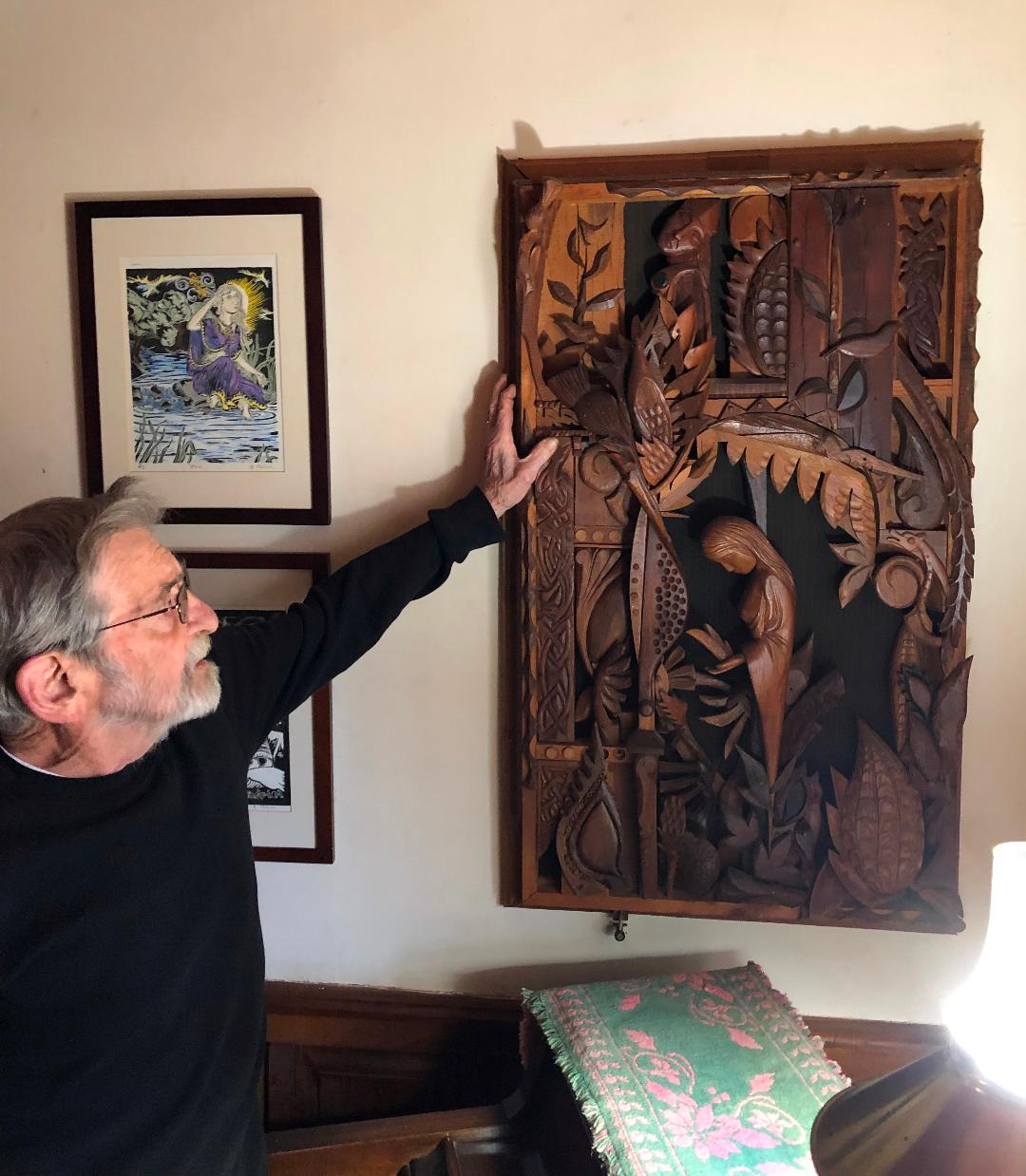
As an eleven year old 6th grade “new kid” at Alfred-Almond Central School, I was invited to a classmate’s birthday party. Little did anyone know that several of the people I met that day would become my closest friends and one would become the mentor that guided me towards my life’s work as a designer-craftsman. More specifically that day began my journey towards becoming a metalsmith carrying on the long tradition of Celtic art.
The day was the Autumn Equinox. It was a perfect Fall Saturday, 21 September 1968. My parents dropped me off at a farm a couple miles outside the village. I had only met my new friend Kevin a few weeks earlier at the start of the school year. The leaves were starting to change, but summer was lingering and it was still t-shirt weather. At the end of the driveway Kevin’s father was at work painting the mailbox. I don’t recall what words he wrote in his distinctive Celtic uncial script, probably "MacCrea" and possibly the farm’s name, “Locustbrea”. What I remember vividly was that the calligraphy was illuminated with the image of a Scottish thistle and an interlace flourish in the Celtic style.
Mr. MacCrea’s mailbox painting was magic! The significance of the thistle was easily recognized from my own family’s appreciation for our Scottish heritage. My grandfather was an immigrant from Aberdeenshire and my mother played bagpipes. The knotwork detail was something new and exciting. This was a tradition that I had just recently been introduced to. My grandmother brought me a little souvenir book about the Book of Kells from a trip to Ireland that summer. My growing appetite for this mysterious Celtic art had already been stimulated by my grandmother, and now, right before my eyes, was someone who could actually do it! I was soon invited into the house where wood carvings, ceramics and prints and drawing, many showing elements of the Celtic style, were on display. A world that I imagined was lost in the past had suddenly appeared as a living physical reality right before me.
Most of the boys at the party were from Andover, where Mr. MacCrea taught art and where his sons had attended school before the family spent the previous year in England on a teacher exchange program. By the most fortunate of coincidences my parents would soon buy a house in the Village of Andover. Less than four months later, I was once again the new kid, this time with classmates I had already met at Kevin’s birthday party and with William “Scotty” MacCrea as my art teacher.
MacCrea was raised in Niagara Falls. His family came to Canada during the Highland Clearances of the early 19th century and maintained much of their Gaelic culture, faith and values. As a youth he was a bagpiper, training with the Buffalo Gordon Highlanders, an organisation which is recognized as the oldest bagpipe band still in existence in the United States. He saw service during the Korean War in the US Navy, where he earned the nickname "Scotty" for his role as the ship's piper. He then came to Alfred, NY., with his young wife Delores. In Alfred the MacCreas rebuilt a rundown farm that had been purchased by Scotty's great-grandmother in 1944. Attending the New York State College of Ceramics MacCrea earned his bachelor's degree in industrial design in 1958 and later a masters degree in education in 1971. Despite several interesting offers he chose to remain at Locustbrae to raise his family. From 1958 to 1989 he taught art at nearby Andover Central School.
Mr. MacCrea's role as a bagpiper was another great connection I made with him. A band, called The Allegany Highlanders, had formed with his leadership a year or two before our introduction. It was not long before I had taken up my mother’s pipes and learned to play them. The pipe band was the major focus of my teenage years. It was making band regalia, buckles, brooches and knives to be worn with a kilt, that I began my career as a craftsman. By the age of sixteen I was selling my craft work to other band members and to a larger audience through people I met through the piping experience.
In the 1960s and 1970s Celtic art was still a very obscure style. MacCrea was one of the few practicing artists who had carried the tradition forward from the 19th century resurgence known as the Celtic Revival. It had begun to fade away in the early 20th century. It is only since the 1990s that the current popularity gained momentum. MacCrea was a very inspirational teacher. Many of his students went on to be artists themselves. Some, like me, even carried on the Celtic art tradition. But beyond just the students who made Celtic art themselves, his teaching introduced a much larger number of students to Celtic art who could appreciate it as part of their own heritage. For me, this meant that the audience for my work, at least locally, already “got it” what these knots, spirals and ancient symbols were all about.
Andover, New York is a place that itself seems like a throwback to earlier times. It was, and still is, very much a “Mayberry” sort of small town. The school where MacCrea taught served kindergarten through 12th grade all in the same building. When I was a student he was the only art teacher for grades 1 through 12 with a total student enrollment of about 550 kids. A large portion of the students were the descendants of Irish potato famine immigrants who had settled here in the 1850s. Irish Gaelic was still being spoken by a few of the older people in the 1930s. MacCrea , while himself of Scottish ancestry, did a wonderful job of informing his students about Celtic art, but also about other Gaelic cultural themes.
After graduating high school in 1975, I spent some time living in London and traveling through Scotland, Ireland and Europe. Then after six years of art school and a brief employment with another craftsman, with my wife Susan and our infant son Andrew, we returned to Andover in 1984. My friendship with the MacCreas continued throughout this time. Scotty’s grandson Alec, is a gifted woodcarver and calligrapher. I taught Alec to play bagpipes while he was in High School. Scotty remained a friend, influence, consultant and inspiration right to the end of his life on Earth, just a week ago.
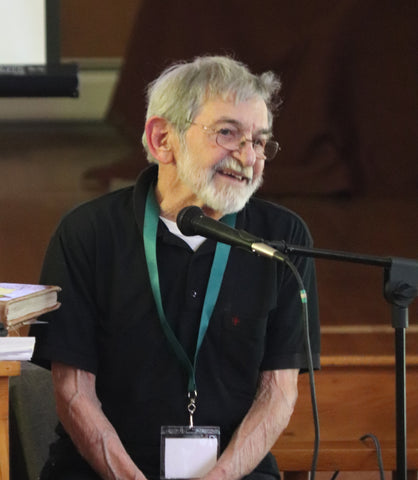
In June of 2019, Andover hosted the first International Day of Celtic Art conference. MacCrea, was a prominent speaker at the first IDCA conference, held in here in June 2019. The conference brought together artists working in the Celtic tradition from across the United States and Canada and included guest artists and Celtic art scholars from Scotland and Ireland. A video of MacCrea’s presentation can be viewed on YouTube.
Mike King of the Down County Museum announced the second IDCA conference, to be convened from June 5 – 7, 2020 in Downpatrick, Northern Ireland, would be dedicated to the memory of MacCrea. King, who did a presentation on Saint Patrick’s Cross at the conference in Andover is hosting the 2020 conference in partnership with Tim Campbell of the Saint Patrick Centre.
Now, as we prepare to lay Scotty's mortal remains to rest, I would like to take my turn to express my affection and gratitude to this man who has had such a great influence on my life and the lives of so many of my friends.
Obituary for William “Scotty” MacCrea
Steve, I thank you from the bottom of my heart for sharing this powerful story and tribute about this Unique, Magnificent Master of the Arts. Most of us, his students, still called him “Mr. MacCrea”, a name so dear to our hearts. Reading your recollection of events transported me to our Andover School years. I just thank God that life and my precious aunt Yolanda brought me to this small town to become “one of his students” and be part of this group. I feel such a great sense of honor and privilege for the special relationship I had with him; I don’t think I can ask for more. He had great admiration for you; of course, as he said it about you, he only guided you to discover your potential, you already had it in you.
Rest in peace Scotty. You left but love never dies. Until we meet again.
Love, Nansai Alcira Ballon
One of the good Ines…
Comments will be approved before showing up.
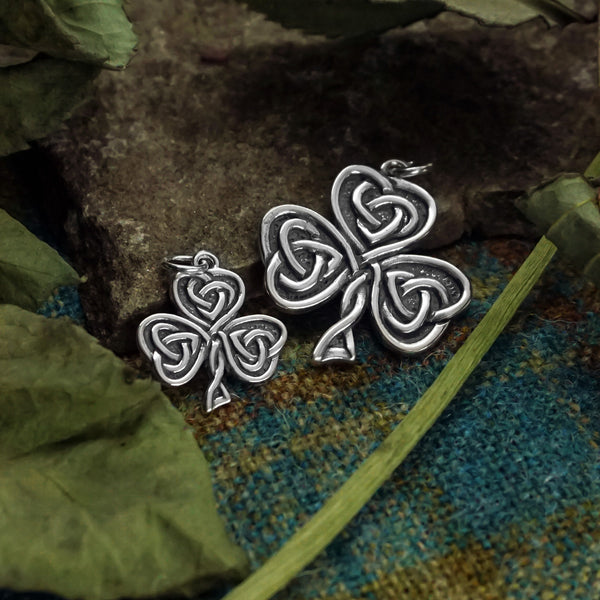
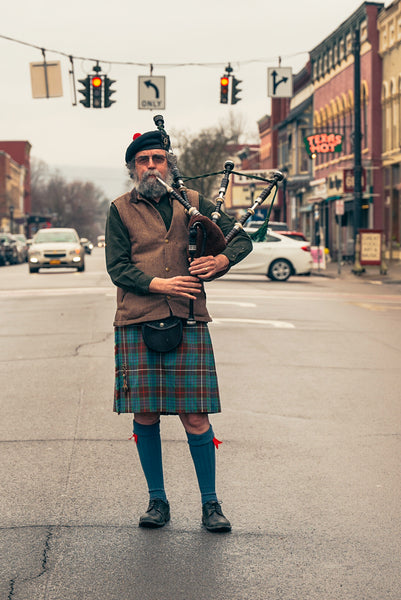
Thousands of photographs were taken. Help find at least one.
Were you a tourist in London, Dublin or Paris in 1975 – 1978? Did you see a street performer playing bagpipes? Did you take his picture? Was it Steve Walker? If you can share that picture with Walker Metalsmiths you could score some sweet Celtic jewelry.
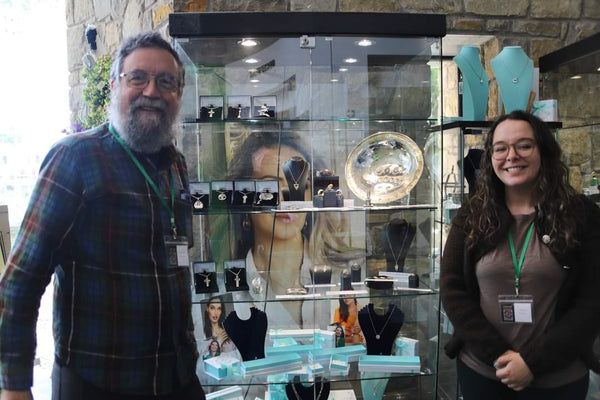
Chris Mattison
March 01, 2024
I can’t believe I am only seeing this now. I’m not sure how i missed it. But am very glad to have found it. Steve, this is so well done. Scotty was so important to to many of us, in so many ways. He is deeply missed.